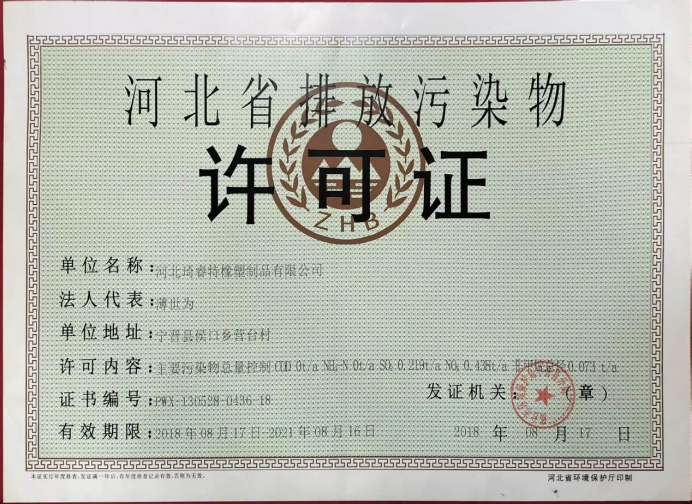R134A Refrigerant Charging Hose Installation and Usage Guide for Efficient Cooling Systems
Understanding Refrigerant Charging Hoses A Focus on R134A Refrigerant
Refrigerants play a critical role in the functioning of air conditioning systems and refrigerators. Among various refrigerants, R134A has emerged as a widely used option due to its environmental compatibility and efficiency. However, the effectiveness of R134A depends significantly on the proper handling and charging of the refrigerant, which is where charging hoses come into play. In this article, we will delve into the importance of R134A refrigerant charging hoses, their features, and their role in HVAC systems.
What is R134A?
R134A, or tetrafluoroethane, is a hydrofluorocarbon (HFC) refrigerant commonly used in automotive air conditioning and commercial refrigeration systems. It became a popular alternative to ozone-depleting refrigerants like R12. R134A is appreciated not only for its lower environmental impact but also for its thermodynamic properties that enable efficient heat exchange.
The Role of Charging Hoses
Charging hoses are essential tools used in the refrigerant charging process. They connect the refrigerant source, such as a canister or tank, to the air conditioning or refrigeration system. A proper connection ensures that the refrigerant is introduced to the system in a controlled manner, preventing leaks and ensuring efficiency.
There are several components to consider when discussing refrigerant charging hoses, especially concerning R134A
1. Construction Charging hoses are typically constructed from materials that can withstand the high pressure of refrigeration systems. Hoses for R134A are often made from rubber or thermoplastic materials, reinforced with additional layers to prevent bursting.
2. Color-Coding To prevent confusion during the refrigerant charging process, charging hoses are usually color-coded. For R134A, the low-pressure line (often blue) and the high-pressure line (often red) are easily distinguishable. This color-coding is crucial for safety, as using the wrong hose can lead to system damage or even personal injury.
3. Fittings Hoses are equipped with specific fittings designed to connect securely to the refrigerant system. R134A charging hoses utilize quick-connect couplings that facilitate easy attachment and detachment from the service ports of the system.
r134a refrigerant charging hose

4. Manifold Gauge Set Charging hoses are typically part of a manifold gauge set, which allows technicians to monitor the pressure within the system. This is crucial for diagnosing issues and ensuring the correct amount of refrigerant is added.
Proper Charging Techniques
Charging an HVAC system with R134A using charging hoses requires proper knowledge and technique. Here are some essential steps to follow
1. Preparation Always ensure that the system is off and properly evacuated before beginning the charging process. This includes checking for leaks and ensuring that all components are in good condition.
2. Connecting the Hoses Attach the low-pressure hose to the low-pressure service port and the high-pressure hose to the high-pressure service port. Ensure that the connections are secure to prevent refrigerant leaks.
3. Monitoring Pressures Start the system and allow it to run for a few minutes. Use the manifold gauge to monitor the pressure readings. This will help in determining if the system requires additional refrigerant.
4. Adding R134A If more refrigerant is needed, open the valve on the refrigerant container carefully. Monitor the pressures closely during this process. It is crucial not to overcharge, as this can cause significant system damage.
5. Final Checks Once the desired pressure is reached, close the refrigerant container and remove the hoses. It’s vital to seal any connections properly to prevent refrigerant leaks.
Conclusion
Understanding the role and proper use of R134A refrigerant charging hoses is essential for those involved in HVAC maintenance and repair. With stringent environmental regulations and the ongoing push for more sustainable solutions, the correct handling of refrigerants like R134A has never been more important. By using high-quality charging hoses and adhering to proper charging techniques, technicians can ensure the efficiency and longevity of HVAC systems while minimizing their environmental impact. As the demand for eco-friendly refrigerants grows, mastering the charging process will become increasingly crucial for HVAC professionals.
-
Understanding Power Steering Tube ReplacementNewsApr.16,2025
-
SAE J1401 Brake Hoses: A Critical Component for Vehicle SafetyNewsApr.16,2025
-
Pipe Couplings: Essential Components for Effective Plumbing and Fluid SystemsNewsApr.16,2025
-
Hose Guard Solutions for Every NeedNewsApr.16,2025
-
Effective Spiral Protection SolutionsNewsApr.16,2025
-
Effective Sewer Cleaning SolutionsNewsApr.16,2025

